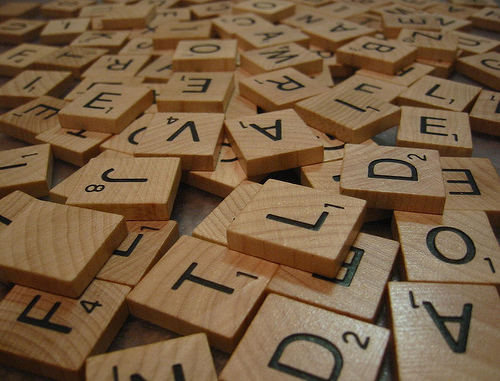@TBPInvictus
Now for something completely different.
That we have become a numbers (and statistics) obsessed society is beyond debate. I’m not sure when it started (Cosmo mag, maybe?), but it’s gotten out of hand. Websites everywhere tell me the X number of things I need to know about Y. Sports, particularly baseball, have gone totally over the top: “Well, Bob, Smith is pretty good in this situation: Over the course of his ten year career, when batting at home, in the bottom of the third, with runners on first and third, one out, with a 1-2 count, on a Wednesday evening in the month of July, between 8:15 PM and 8:30 PM, with the temperature between 70 and 72, he’s…1-for-1.” Much of this, of course, owes to technology and advances in computing power over the years. We seem to compile some statistics for no other reason than we can. As a numbers guy myself, I guess I don’t mind too much and would like to add my own idea to the mix.
I’ve always been a big fan of Scrabble, and a daily game or two against the computer on the iPad is now part of my daily routine. Scrabble’s a game, to the best of my knowledge, to which a meaningful new stat hasn’t been added in approximately forever. So, herewith my modest proposal:
Points per Points Played (PPP), the formula for which would be, as indicated, Points Scored (what did you score?)/Points Played (sum total of tile points you played to score it). I consider this a good measure of a player’s efficiency with his/her tiles. We know that the sum of all tiles is 187 face value. Those points are played with varying degrees of success from game to game to produce whatever outcome. A simple 1-point letter “S,” placed on a Triple Word Score box, could easily generate 30 or more points – a huge ROI for a 1-point tile. That same “S,” appended to the letter “A,” would produce only 2 points, a vastly inferior outcome. Someone who, during the course of a game, played 95 points of tiles and scored 400 points would have a PPP of 4.21. His opponent, who played the remaining 92 points and scored 410 points, was slightly more efficient (in winning while playing fewer points), scoring 4.46. PPP could also be a career statistic, allowing players to capture a reasonable measure of proficiency over time, as I’d expect better players to have a higher PPP. This measure, which could of course be calculated manually, would be a snap to incorporate into the iPad app. While there obviously other measures of proficiency, such as, say, points per turn (also valuable), PPP rewards you for efficiency and not just for playing high point value tiles such as Q, Z, J, or X.
And, yes, of course I understand that I have not accounted for the two blank tiles.
So, there you have it. Thoughts?



What's been said:
Discussions found on the web: